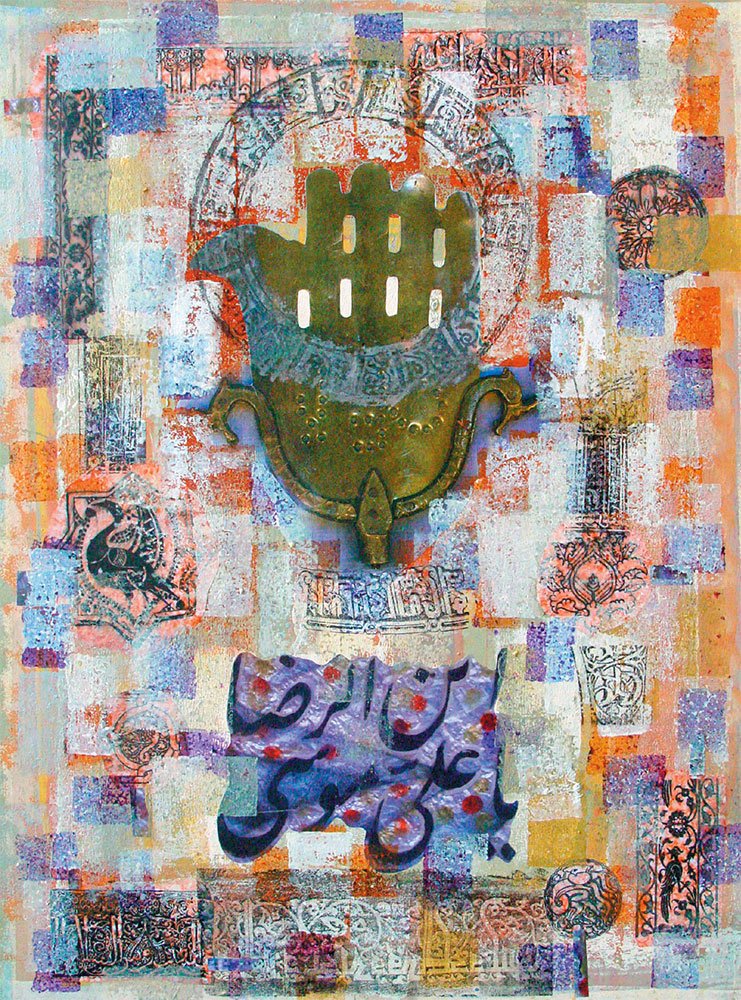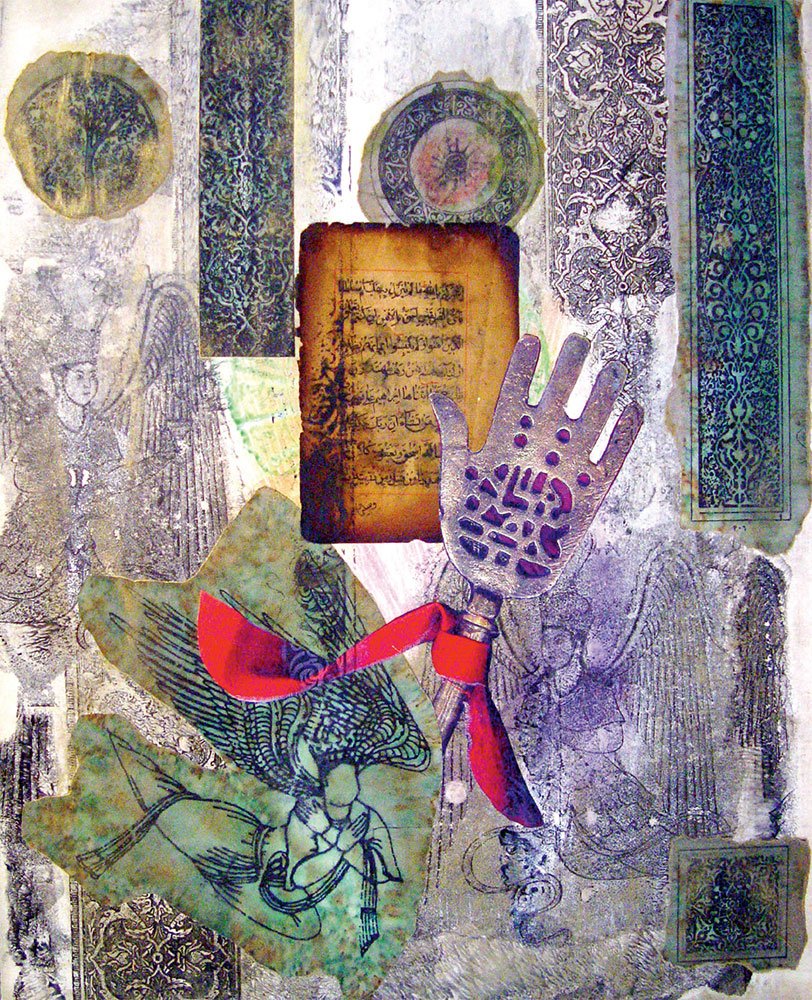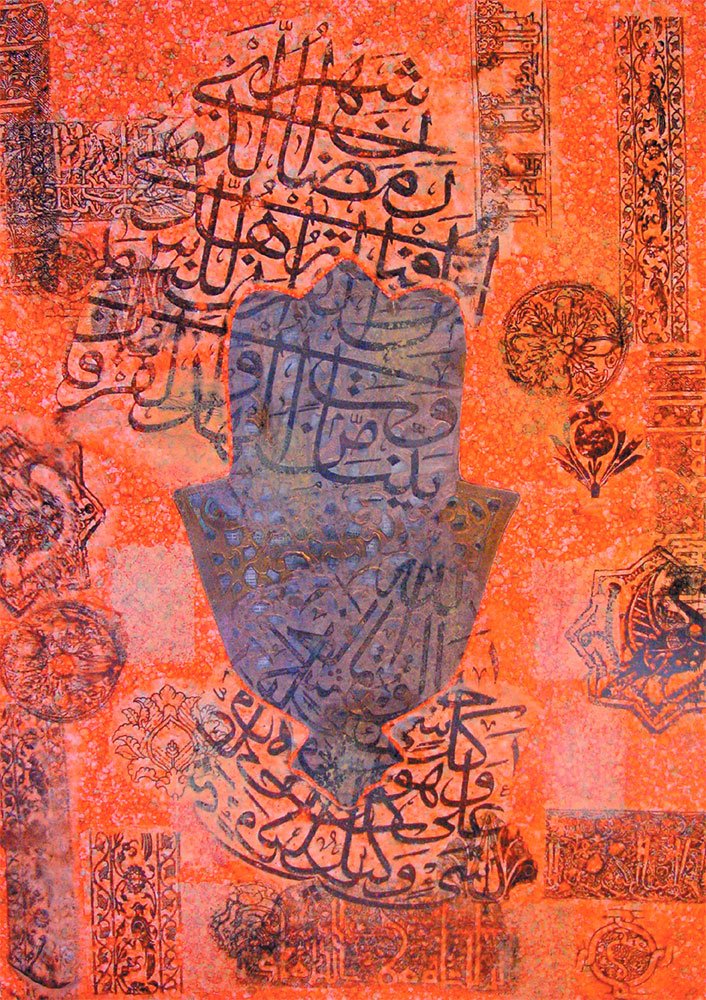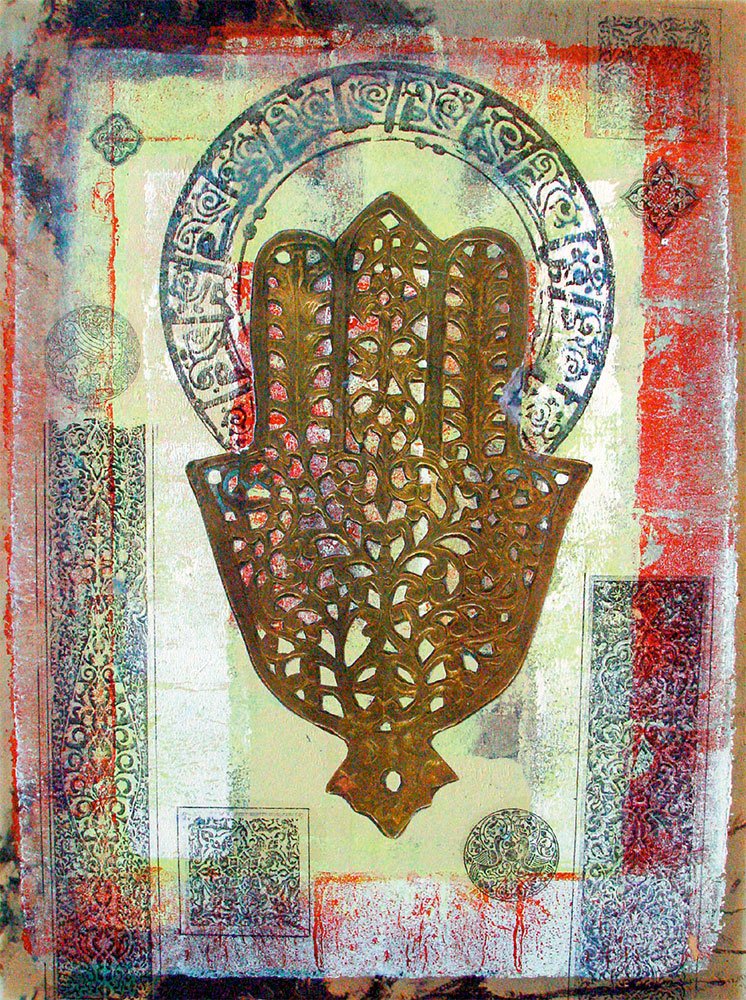Artist Statement
Many icons reflect our culture and identity; my goal is to create a visual language that is a vibrant tribute to our rich cultural heritage. This language, universally understood, is not just for a select few but for all, evoking a deep sense of pride and connection in all who experience it. The human hand holds immense symbolic significance across cultures. A hand extended fully is a universal sign to stop, while a hand emerging from above, whether from a cloud or the arc of heaven, represents divine presence. Conversely, a hand reaching towards the sky symbolizes a plea for divine intervention, echoing the words from the Bible: ‘Stretch out thine hand towards heaven, that there may be darkness over the land of Egypt, even darkness which may be felt.’ (Exodus 12:8)
In Islamic art, the Hand of Fatima often appears as a brass door knocker, symbolizing good fortune. This hand motif is intricately embroidered in Eastern folk art, sometimes depicted with eyes at its centre. It also holds significance in literature, offering a fluid metaphor with layers of interpretation. As an artist with roots in Iran, I have delved into a series of works exploring the multifaceted symbolism of the hand. This profoundly personal exploration, drawn from my experiences and profound connection to the vibrant Iranian heritage, is an invitation for you to join me on this deeply personal and intimate artistic journey. My focus is on the intricate ornamentation of the brass Hand. I play with textures found in tiles, textiles, and manuscripts to create an identical and unique form of traditional iconography to present in contemporary composition.
The Hand of Fatima has been a recurring motif in various cultures, inspiring me to create art that embodies its profound symbolism. Taking cues from popular culture, talismans, printed prayers, and the Hand of Fatima itself, my artworks strive to forge connections and extend a welcoming invitation to a wider audience. By integrating these recognisable elements, I aim to provide a more accessible and relatable experience that resonates with your own cultural background.
Project Details
Canberra Museum and Art Gallery
Canberra, Australia – 2005
Iziko Museum of South Africa
Cape Town, South Africa – 2006

Blessing to the generous man
Mixed Media, 50 x 40 cm
“Farideh Zariv creates a beautiful palimpsest of Iranian history where the hand serves as the key to open the mystery of the images.”
“For the first time she brought together images of the Hand of Fatima and geometric patterns from Persia along with Persian and Arabic calligraphy covered with Talismanic Writings.”
Professor Sasha Grishin, Head of Art History, ANU

Generosity is a quality of the people of Paradise
Mixed Media, 100 x 70 cm

He who has patience possesses much ability
Mixed Media, 70 x 50 cm

Knowledge is the noblest of values
Mixed Media, 70 x 60 cm

Deliberation before action protects you from regret
Deliberation before action protects you from regret
Mixed Media, 50 x 40 cm

Patience is the key to comfort
Patience is the key to comfort
Mixed Media, 50 x 40 cm

Clemency’s taste at first is bitter, but at last is sweeter than honey
Mixed Media, 60 x 50 cm

The free man is still free even if touched by harm
The free man is still free even if touched by harm
Mixed Media, 50 x 40 cm

The free man does not break his promise
Mixed Media, 70 x 50 cm

Clemency’s taste at first is bitter, but at last is sweeter than honey
Mixed Media, 60 x 50 cm

The noblest of riches is the abandonment of grasping desire
The noblest of riches is the abandonment of grasping desire
Mixed Media, 50 x 40 cm
Exhibition Review
The human hand is one of the most poignant images known to humankind. A fully extended hand is the universal symbol to stop. A hand shown from above, from a cloud or the arc of heaven, is a symbol of divine presence, while a hand outstretched towards heaven is a symbol beseeching divine intervention. As in the words of the Bible “Stretch out thine hand towards heaven, that there may be darkness over the land of Egypt, even darkness which may be felt.” (Exodus 12:8)
In popular Islamic art the hand of Fatima often appears as a brass door knocker and, as with such hand door knockers in the West, it denotes good fortune. The motif of the hand is freely embroidered within folk art and popular literature; it is a fluid metaphor rich in levels of interpretation.
Farideh Zariv is an Iranian artist living in Canberra who, in this series of work, explores the symbol of the hand as a multifaceted metaphor. While conscious of the immensely rich Iranian heritage, she builds up layers of imagery as layers of meaning. She concentrates on the beautifully elaborate ornament on the brass hand of Fatima, which she shows suspended over the sacred text of an ancient Quran. In other pieces she explores textures on tiles, textiles and manuscripts or contrasts the tranquil permanence of the metal hand with the expressionist flashes of colour or the swirling gestured beauty of Arabic calligraphy.
Farideh Zariv creates a beautiful palimpsest of Iranian history where the hand serves as the key to open the mystery of the images.
Professor Sasha Grishin AM FAHA
Art History Head, Australian National University